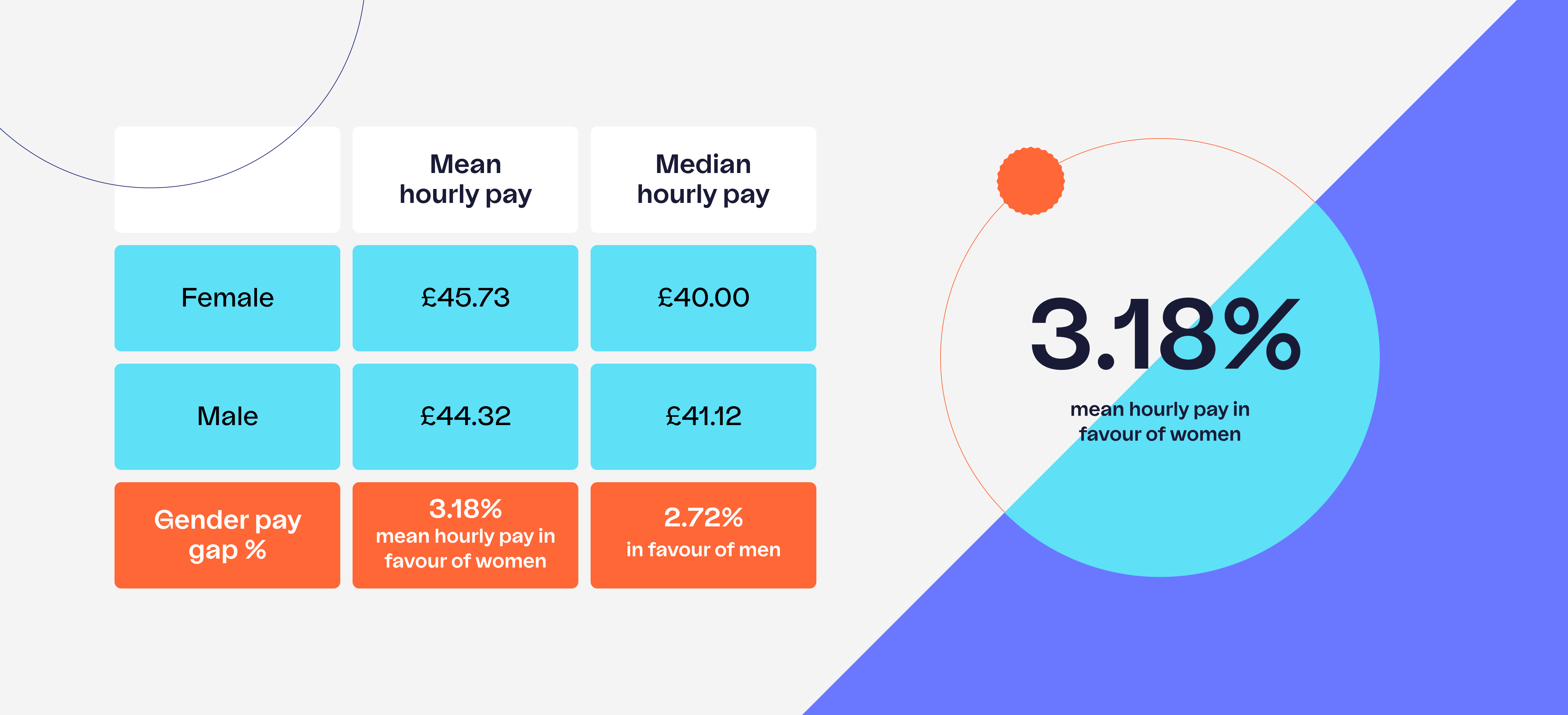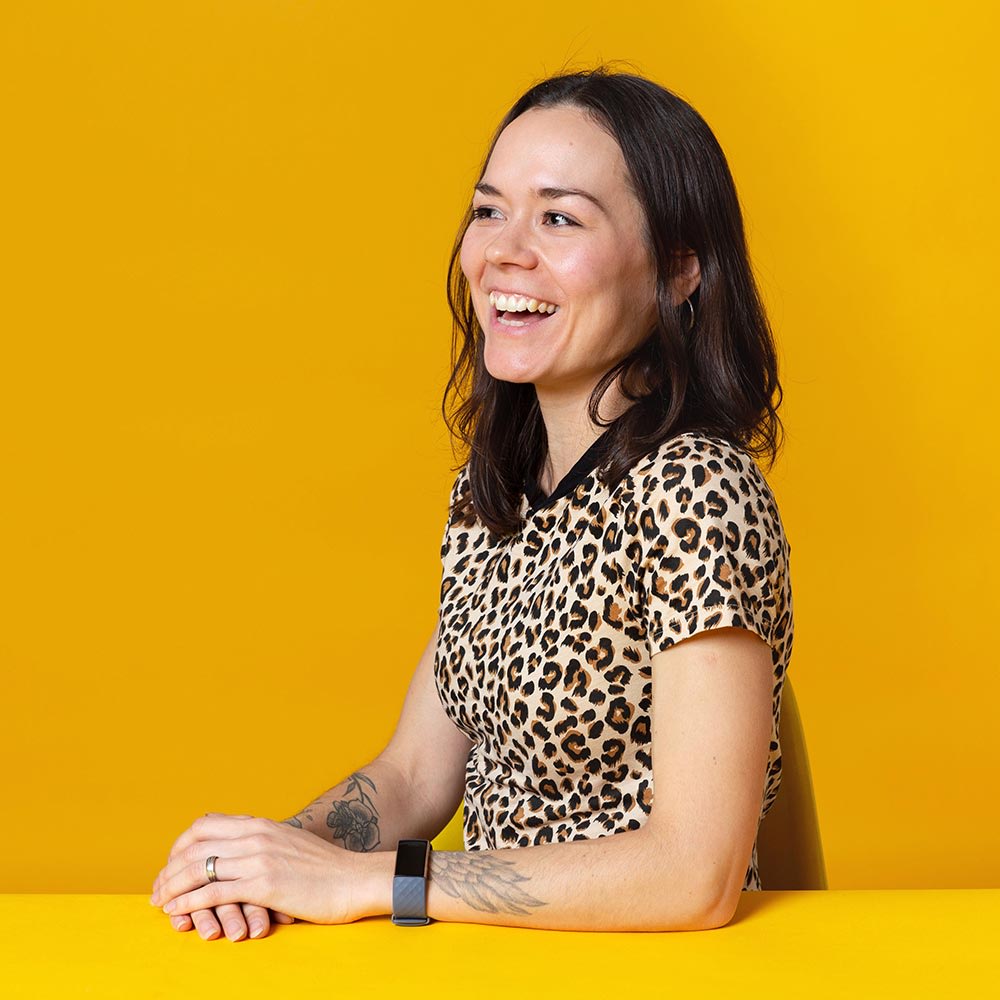Measuring and reporting our gender pay gap is important to us; it tells us more about a facet of equality at ustwo. As the fight for equality continues across all underrepresented groups, we feel it’s important as ever to measure and publish our pay data. Transparency should be adopted by all industries, and by setting the trend, we hope that others will follow. The world news is sad and frightening right now, though we still feel it’s important for us to measure and publish our data, so that we continue to pay attention.
Before we share the data, we want to acknowledge that not everyone identifies as gender binary. It would be progress if formal reporting acknowledged this in some way. At ustwo, we welcome people of all gender identities and expressions. When we calculate these figures, we use the gender identity ustwobies choose on our people system.



We’ve come a long way since we first started looking at our pay gap data. In March 2016, we had a gender pay gap of 13% (in favour of men). Today it’s -3.18% (in favour of women by 3.18%).
The data is encouraging. It proves that we have progressed in many areas – particularly in ensuring equal representation of genders in senior roles. So it’s worth celebrating how far we’ve come whilst also looking ahead to short and long-term goals that we can realistically achieve – and remaining mindful that true equality will always be the goal and pay transparency is only the start.
Our journey towards inclusion: Where we are today
Currently, our median gender pay gap is 2.72% in favour of men (using hourly pay) and we have made effective strides towards increasing gender diversity within our leadership. Out of seven roles in our European Leadership Team, four of these are women and all based in London.
Certainly it’s at this level that the shift has been most marked. But we want to ensure that women at all levels are rewarded fairly. To that end, we need to interrogate the way our figures play out across role types.
Changing up recruitment practices
What’s more, having made it a mission to use diverse interview panels, and to review where we advertise jobs - in order to reach out to a wider candidate pool - factors beyond gender, such as ethnicity, age, disability and socio-economic diversity always need consideration, too.
Having introduced 50/50 gender split shortlists, we have hired many fantastic role models, including our female Executive Design Director and our Head of Engineering. Meanwhile, we ask recruiters to ensure that 50% of their candidate introductions are from underrepresented groups. We’re continuing our work with external networks and were thrilled to partner with PINK Programming for a coding workshop in February. The session allowed a group of female, transgender and non-binary developers to experience how our tech teams work together to deliver award winning digital products.
At the same time, we continue to engage with local schools and colleges, as well as talent from our local East London community. We’re proud of the work we do with Flipside. We don’t want to focus on university graduates alone; we also want to foster talent internally – to help those who want to change careers or learn new skills. To this end, we created an internship in the London studio which provides the opportunity to try out a horizontal move to a new discipline, enabling us to retrain and retain talent. Please do speak to us about this if you are interested in offering the same opportunity within your organisation.
To foster a holistic sense of inclusion and care for one another, other initiatives we have put in place range from inclusivity workshops to our ‘Let’s Talk’ Slack channel - created by an employee who felt able to be open about his own mental health – and the use of recruitment platforms and technologies which have been designed to enable fairer hiring decisions. And the statement ‘I can be my authentic self at work’ forms part of our twice-yearly employee engagement survey because we know that improving diversity goes far beyond headcount or stats; ultimately, the aim is to foster a feeling of belonging and engagement.
There remains much to be done
We pride ourselves on our determination to achieve inclusivity in this way – not only because it’s the right thing to do but also because it makes our business more productive and profitable. And now, with regular salary reviews and clearer progression frameworks, we are keen to do much more.
Pandemic life has blurred the boundaries between work and home, and we know flexibility is crucial to creating an inclusive culture. We are still learning, however, we will continue to support every ustwobie, ensuring they have the flexibility to make work, work for them.
Whilst we are very proud of our efforts thus far, we must continue to interrogate the data and critically appraise our progress. Although we didn’t manage to get enough data for accurate ethnicity and race pay gap reporting this year, we want to tackle this by April 2023. We must also continue to encourage our industry colleagues to do the same and discuss any concrete steps they are taking to close the gender pay gap.
All organisations need to honestly appraise what is happening within their walls, and ask questions such as:
- Are women more likely to be employed into lower paid roles?
- Do men and women leave at different rates?
- Do particular aspects of pay, such as bonuses, differ by gender?
- On average, do men and women receive different performance scores?
- What are you doing to support part-time employees and enable them to progress?
We continue to welcome creative solutions. If you have any suggestions on how we can make ustwo a more inclusive place to work, please do get in touch with me.
